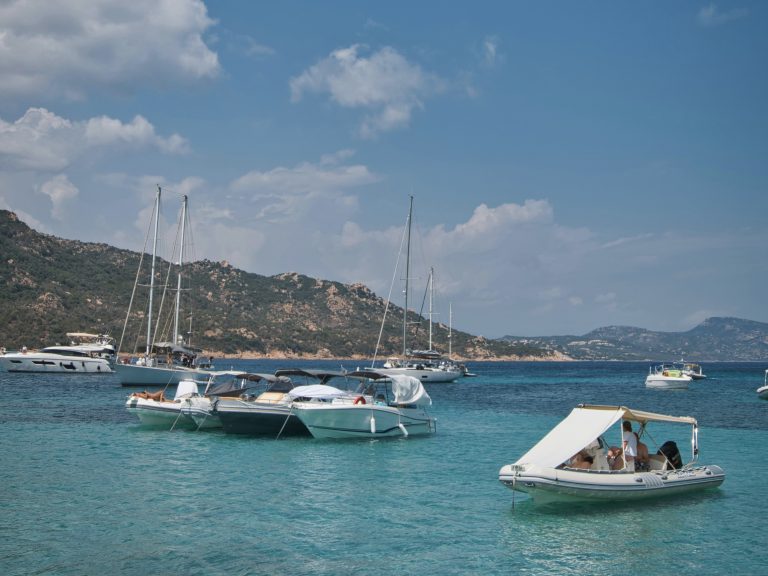Rigid Inflatable Boats (RIBs) have gained significant popularity in recent years, thanks to their unique combination of durability, performance, and style. Once basic in design, RIBs have evolved significantly, becoming more sophisticated and precise in their construction. Today, their design requires more expertise than it might initially appear.
The hull, inflatable tubes, and deck layout each play a vital role in ensuring that these boats meet the needs of various industries, ranging from recreational boating to military and commercial applications. In this article, we will take a closer look at the design of RIBs, exploring each component, from the hulls to the inflatable tubes and deck layouts, and how they contribute to the boat’s overall performance and functionality.
1) RIB hull design: improving stability, speed, and comfort
Needless to say that the hulls are the most important design feature of any boat, and the same holds true for Rigid Inflatable Boats. They ensure seaworthiness, stability, and comfort, guaranteeing a smooth ride in all conditions. From bulky lines, hulls have become much more streamlined, thanks to a deeper understanding of hydrodynamics and advancements in 3D modeling.
The manufacturing process of RIBs has evolved over time, focusing on lightness, durability, and more efficient use of raw materials. Whether made from traditional fiberglass or marine-grade aluminum, RIB manufacturers prioritize delivering the smoothest possible experience on the water. While fiberglass (whether hand-laminated or infused) is still predominantly used by manufacturers, aluminum has proven to be a solid alternative due to its light weight. There is no better example of this than Highfield’s rise among the world’s top players in just a decade.
In recent years, Rigid Inflatable Boats have also seen the introduction of foils to further enhance comfort, speed, and reduce fuel consumption. SEAir has been a pioneer and early adopter of this technology with its Flying Tender®80. The French brand affirms that the boat flies around 20 cm above the water surface. Impressive! Checkout their website at https://seair-boat.fr/
2) How inflatable tubes boost safety, buoyancy, and performance
Inflatable tubes (also known as pneumatic tubes or collars) are the defining feature of Rigid Inflatable Boats. While some new boat enthusiasts may still be concerned about their supposed fragility, it’s important to emphasize that, on the contrary, inflatable tubes provide an added layer of safety and buoyancy. Their materials and manufacturing process have been perfected over time, making them highly reliable components of modern RIBs. For more information on the materials used, we’ve already discussed the differences between PVC and Hypalon in the following article: https://www.ribnews.com/differences-between-hypalon-and-pvc-what-you-need-to-know
Inflatable tubes can come in a variety of colors, though black, grey, and white remain the most popular options. Many boats feature a combination of two or more colors to boost their style and make them stand out. That’s also a way for manufacturers to differentiate themselves from others with signature colorways. Apart from colors, tubes can also come in different finishes with specific patterns and anti-slip properties.
Tubes come equipped with accessories such as handles, grommets, in addition of valves for inflation and to prevent overpressure. Lastly, the rubrail, also called rubbing strip, surrounds the tubes to protect them from impacts and abrasion.
3) RIB deck layouts: maximizing comfort, storage, and versatile use
What makes RIBs successful nowadays is their versatility in layout configurations. Gone are the days when they were equipped only with a simple deck where you could stand inside as the only option.
Versatile configurations: RIBs have evolved beyond their reputation for speed and practicality, now catering to a variety of uses. With a range of layouts, they offer everything from open-deck models ideal for water sports and sunbathing to larger versions with cabins, providing comfort for longer trips and overnight stays. This shift reflects the growing versatility of RIBs, making them popular choices for both leisure and adventure on the water.
Seating and comfort: RIBs can be used for high-speed rides, recreational cruising, and even rescue operations. The seating arrangement is most often comfortable and secure, particularly if the boat will be used in rough seas. Many RIBs feature bolstered seats with high backs to ensure passengers remain stable and secure during high-speed maneuvers.
Storage: storage space is another important consideration. RIBs often offer enough room for personal gear, safety equipment, and possibly even fishing or water sports gear. Many RIBs feature storage compartments under the seats or within the hull for easy access to essential equipment.
Steering and controls: for many RIBs, the helm is designed to accommodate both a steering wheel and a throttle control in a way that is easy to reach and use, even when navigating through rough conditions. The design of the console usually allows for the installation of essential electronics like GPS, radio, and sonar.
Conclusion
The design of a Rigid Inflatable Boat (RIB) is a balancing act between performance, durability, and comfort. The combination of the hull material, inflatable tubes, and deck layout ensures that RIBs can handle various conditions while providing a safe and enjoyable experience on the water. The hull design (fiberglass or aluminum) impacts speed, durability, and overall performance. The inflatable tubes provide buoyancy, stability, and protection, which are essential for safety and comfort. The deck layout optimizes space, usability, and comfort, enhancing the functionality of the boat.
Whether you’re using a RIB for recreational purposes or commercial operations, understanding how these design elements work together is essential for selecting the right boat to suit your needs.
